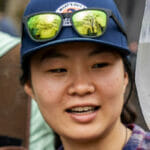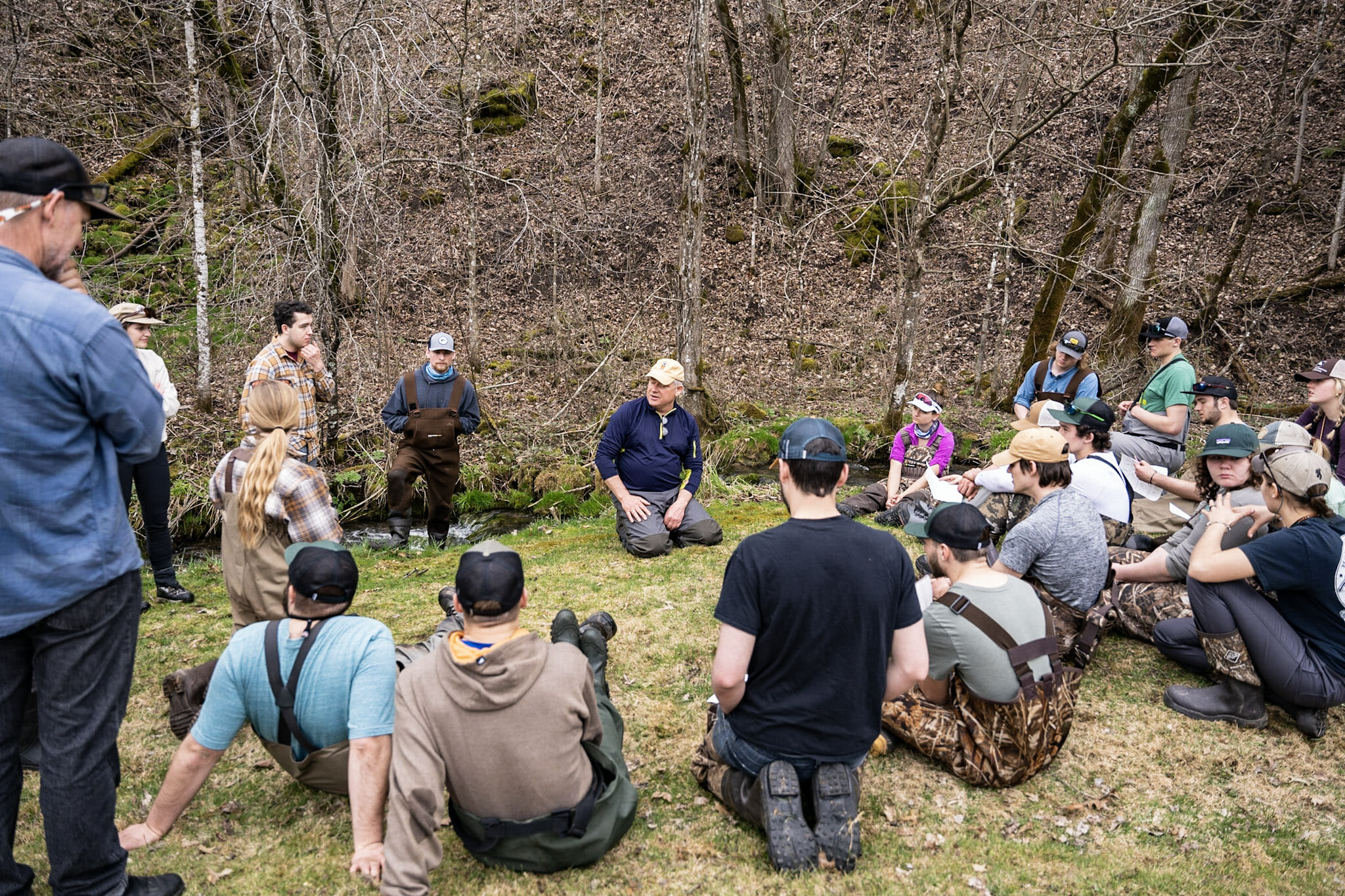At TU’s Costa 5 Rivers Meetup in Wisconsin, students learn why fishing and conservation go hand in hand
Editor’s note: Student anglers recently converged on Wisconsin’s Driftless region for a weekend of fly fishing, camaraderie, and volunteerism at the Trout Unlimited Costa 5 Rivers Midwest Meet-Up. The following article was written by Linnea Turner for The Bark, University of Minnesota Duluth’s student news organization.
Fly fishing is like kayaking — most people know of it, maybe even have done it, but they do not actually know how the equipment works or how technical it can be. Both activities can be extremely simple, but a variety of skills and knowledge go along with each. Fly fishing is a passion, a hobby, an art, and a sport.
TU’s Costa 5 Rivers program recently hosted a regional meetup for Midwest college fly fishing clubs to fish and learn. The University of Minnesota-Duluth’s developing club brought four members down to Viroqua, Wisc., to further explore the sport.
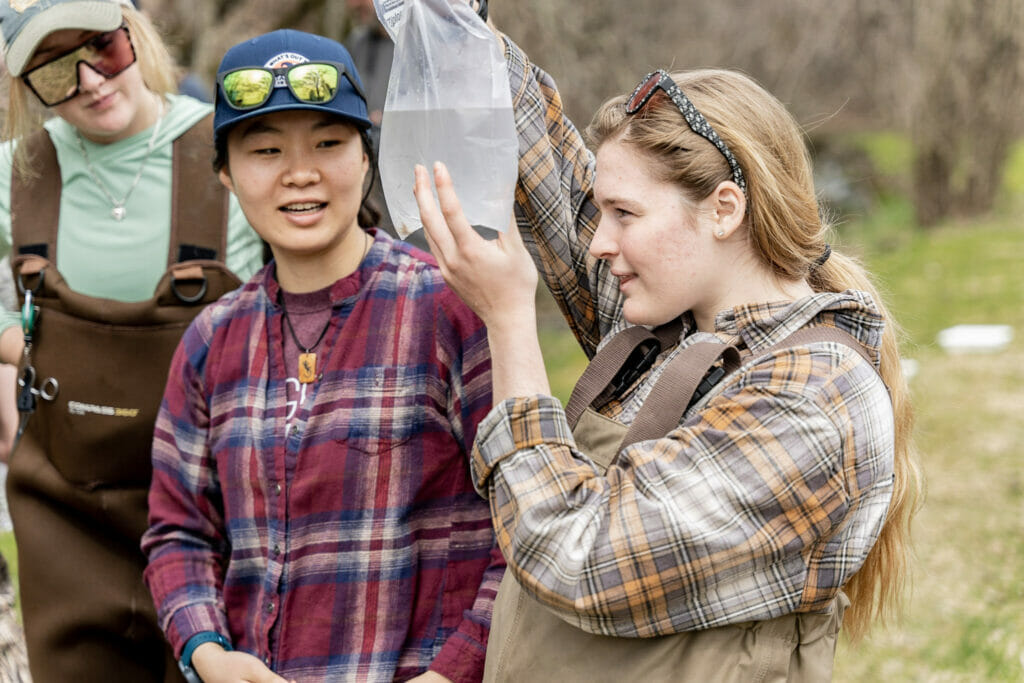
Brice Lauwers, club president, is a passionate fly fisher and accounting major. Anna Early is a finance major, rustic outdoorswomen and intermediate fly fisher. Grace Carleton is currently exploring majors, a full-time adventurer and fly-fishing virgin (but not anymore). I am an environmental science major and previously worked for TU as an aquatic field resource technician in the Great Lakes region.
Three college clubs embarked on a road trip to experience the outdoors. Many of the students came from University of Wisconsin-Stevens Point and a few from the University of Wisconsin-Stout. The event was held at the West Forks Sports Club. As students arrived on Friday, April 22, they had the opportunity to fish right on the West Fork Kickapoo River flowing next to camp. The evening included a late-night bonfire, late arrivals, tent camping and car camping.
Saturday morning at 5 a.m. the excited morning folk awoke. I stumbled out of my car quietly and Brice jumped out of his tent, tired of pretending to sleep. Brice and I were two of the 25 people who saw the fog suspended above the river and heard the morning sounds of cows and birds. Brice started fishing right away and caught a brown trout after about 10 minutes of having his line in the water. Brice is fully committed and passionate about the art of fly fishing. He ties all his own flies and embraces the full process.
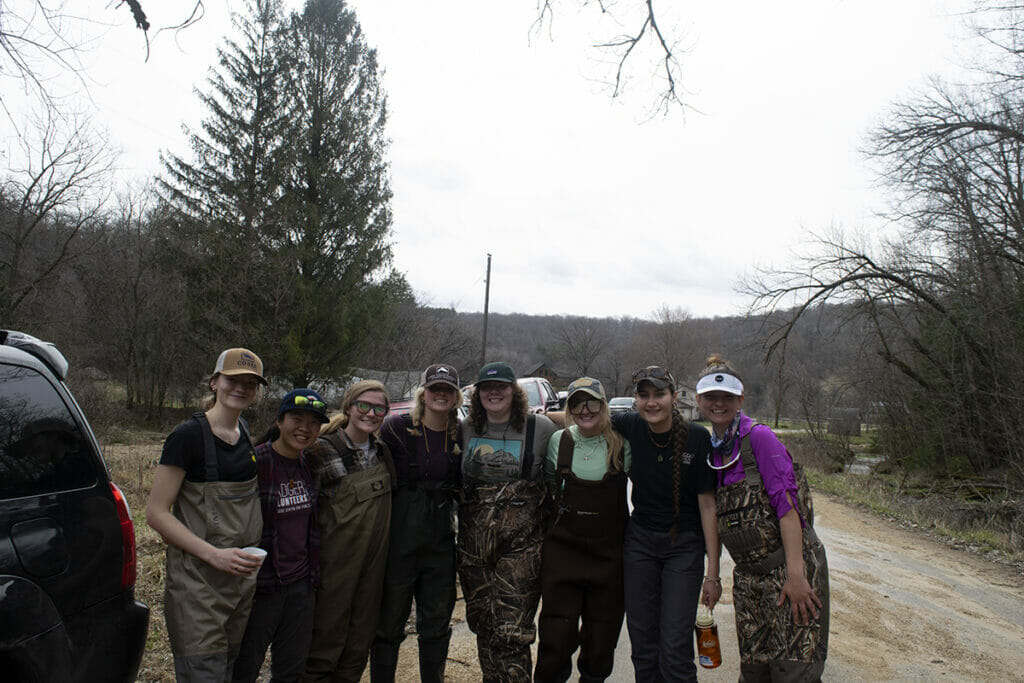
“Maybe there are people out there growing their own worms to fish with … but [the process of creating flies is] more challenging,” Brice said.
I, on the other hand, am not dedicated to fly fishing and did not fish right away. I sat by the river, enjoyed nature, and studied the flow.
By 6:00 a.m. my impatience and excitement were un-containable, and I woke up Grace. After she pulled on waders, I gave her a quick casting lesson. I have only a base knowledge of the sport, but I attempted to teach by example.
Even though Grace had never held a fly rod before in her life, her excitement to learn and improve showed through. The concept of fishing while standing knee-deep in water and having the ability to walk through a river chest-deep, feeling the cold water surround you while remaining completely dry, was new to her.
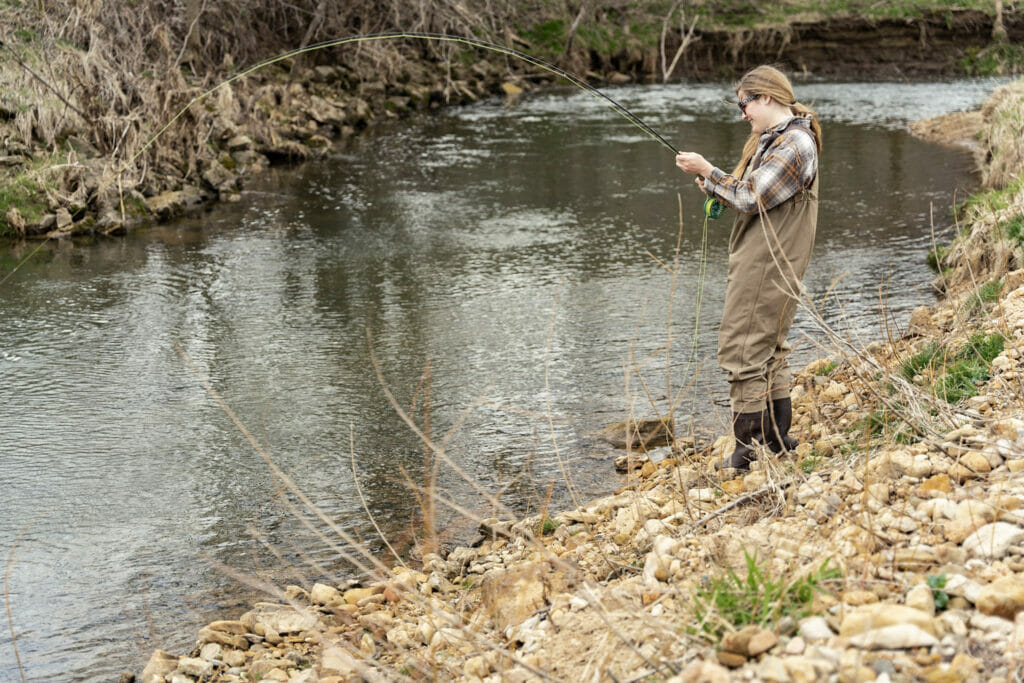
By 8:30 a.m. we were back at camp to eat breakfast.
After breakfast and small conversations, I was aware of how much diversity of knowledge and passions was in the room with me. I was surrounded by individuals from diverse educational backgrounds but similar mindsets. Many students were biology-related majors, but there was a range from machine operator to interior designer.
We had the opportunity to learn from and listen to many knowledgeable scientists and fishers at the event. One of these people included Mike Miller, an ecologist with the Wisconsin Department of Natural Resources. He brought us to the headwaters of Seas Branch, where we saw clear water flowing from a hillside.
We performed kick-test surveys to see what organisms were living under the rocks. By kicking up sediment and catching it in a net, we were able to capture hundreds of tiny organisms, such as mayfly larvae and nymphs. The tiny insects we identified are often what flies are tied to represent. At the core of fly fishing, presentation is key. Anglers create flies that represent natural food sources.
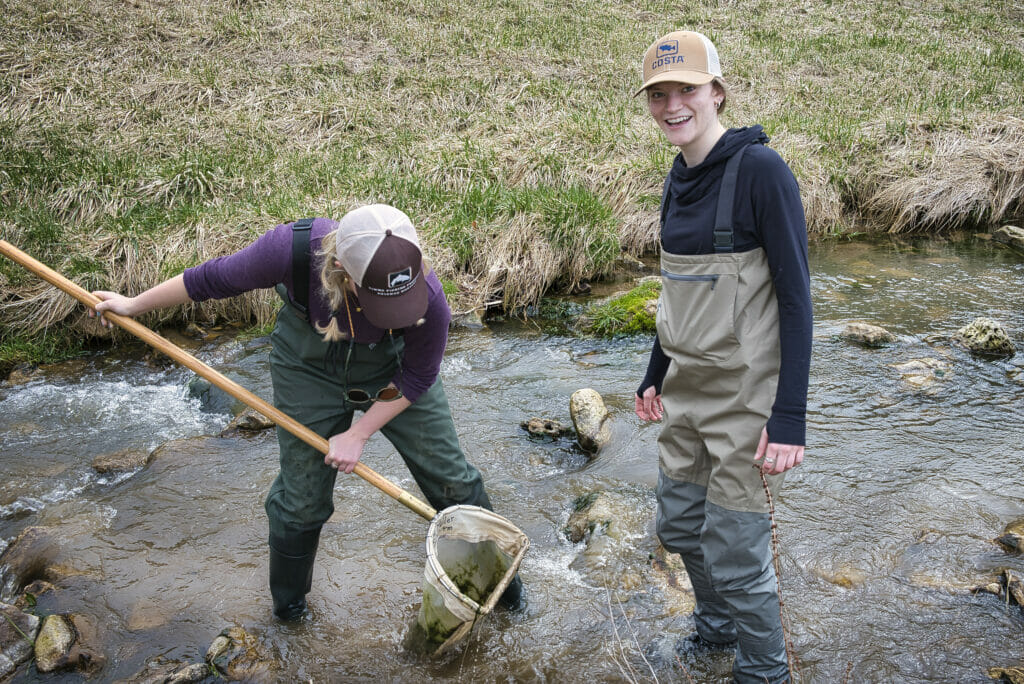
After stream sampling with Mike, we all split up and went fishing. The stream options are endless in the Driftless area of southern Wisconsin, so I lost track of everyone but Brice and Grace.
Brice took time to continue to teach Grace casting techniques. As beginners’ luck would have it, Grace caught three fish — one sucker and two brook trout. I saw a few fish bite, but I could not hook them. I simply enjoyed casting, wading in the river and being around other like-minded individuals.
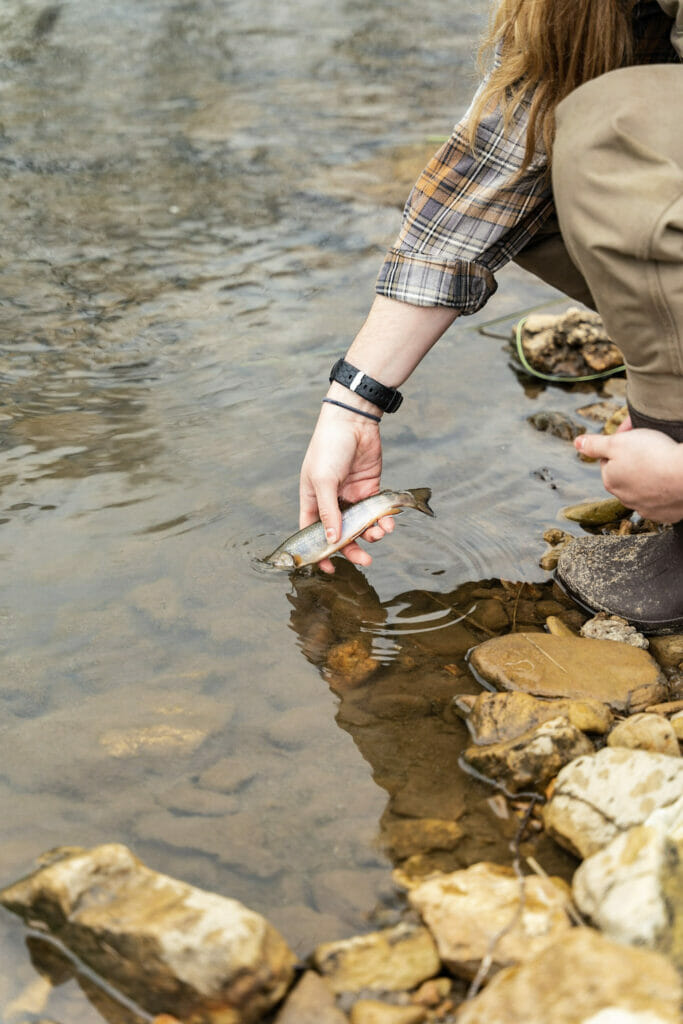
Unfortunately, I had to leave early, so I missed out on all Sunday activities, including a service project where students had the opportunity to build LUNKER structures, which create habitat and cover for trout.
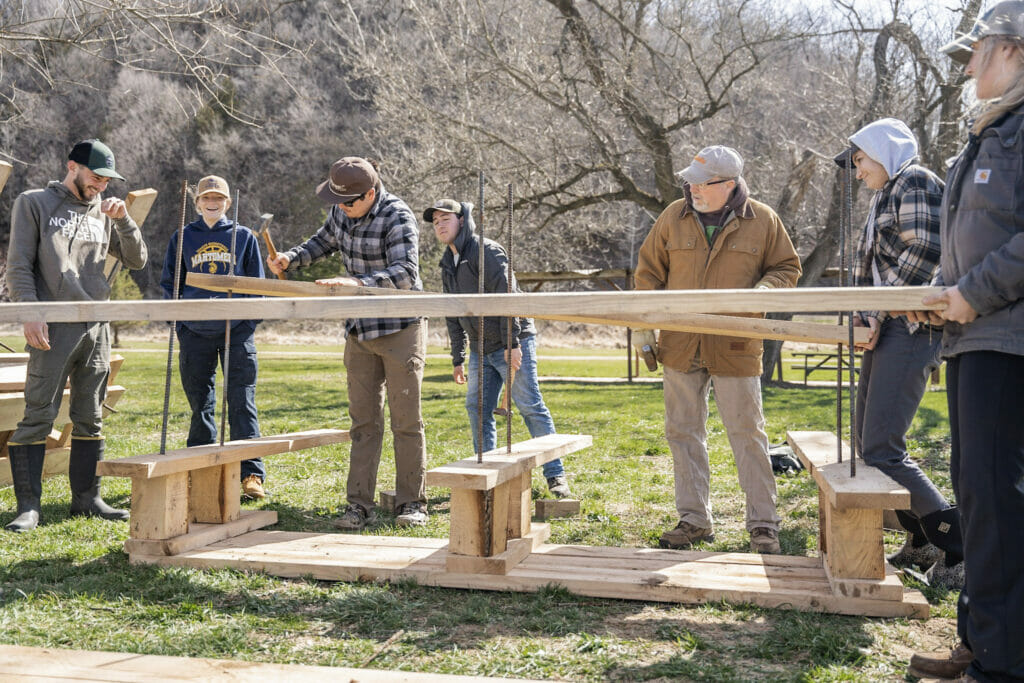
This effort was led by Paul Krahn, stream restoration specialist with TU’s Driftless Area Restoration Effort. There were also fly-fishing gear giveaways (provided by donations from Costa, Simms, Yeti, Shenanigans Fly Fishing, Trout Routes and Trout Unlimited), fly tying and of course, more fishing. The resources and opportunities at this event were amazing.
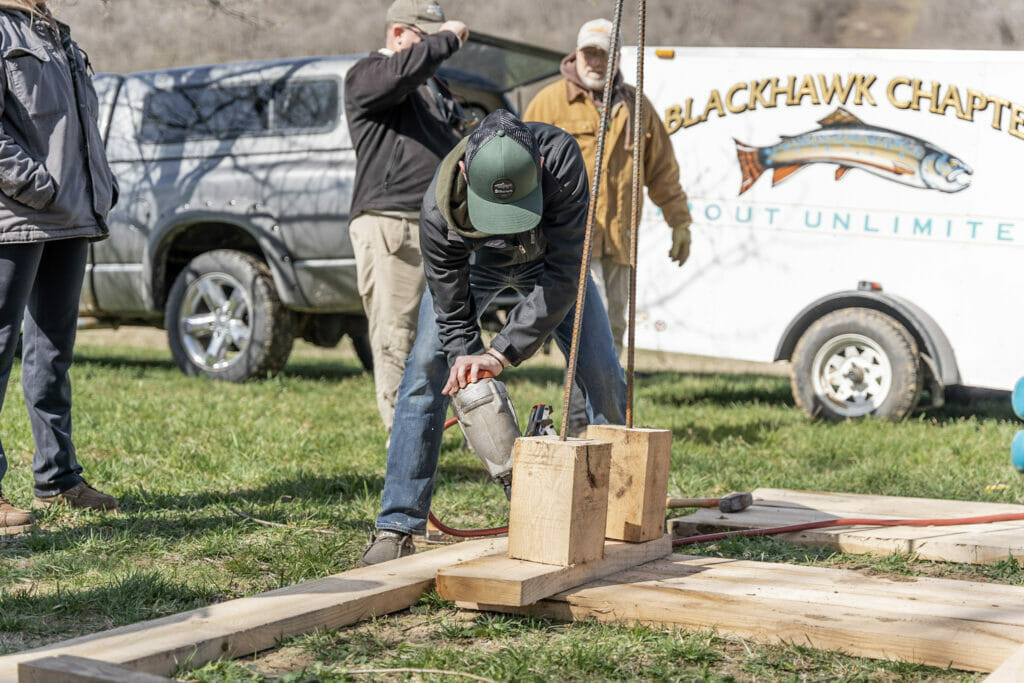
Fly fishing is a mystery to some but loved by many. There is an unbelievable amount of resources through organizations such as Trout Unlimited to get involved in river conservation and fly fishing. Fly fishing is available to all. There is always more to learn.
This event was made possible with support from the Wisconsin TU Council and the AFFTA Fisheries Fund. Special thanks to the following individuals: Tina Murray and Valerie Hein-Hamstra (West Fork Sports Club), Mike Kuhr (Wisconsin TU), Paul Krahn (TUDARE), and Mike Miller (Wisconsin DNR) for contributing their time and resources. Funding and materials for the service project were provided by Southern Wisconsin TU, Southeast Wisconsin TU, and Blackhawk TU.


